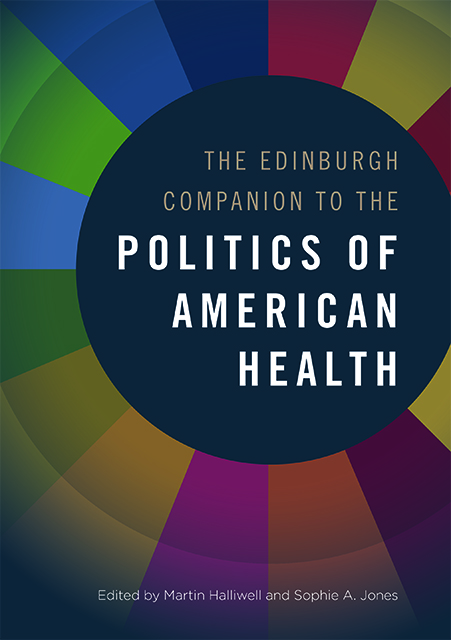Book contents
- Frontmatter
- List of Contents
- Notes on Contributors
- Introduction: The Political Landscapes of American Health, 1945–2020
- I Geography, Community and American Health
- II Critical Health Conditions: Debates and Histories
- III The Politics of Children's Health
- IV The Institutional Matrix of Health Care
- V The White House, Congress and Health Reform
- VI Justice, Ethics and American Health
- VII Public Health and Global Health
- General Bibliography
- Index
21 - Left Out: Health Security and the American Welfare State, 1935–50
Published online by Cambridge University Press: 12 August 2023
- Frontmatter
- List of Contents
- Notes on Contributors
- Introduction: The Political Landscapes of American Health, 1945–2020
- I Geography, Community and American Health
- II Critical Health Conditions: Debates and Histories
- III The Politics of Children's Health
- IV The Institutional Matrix of Health Care
- V The White House, Congress and Health Reform
- VI Justice, Ethics and American Health
- VII Public Health and Global Health
- General Bibliography
- Index
Summary
In January 1944, President Franklin D. Roosevelt's Second Bill of Rights championed ‘the right to adequate medical care and the opportunity to achieve and enjoy good health’, alongside ‘the right to adequate protection from the economic fears of old age, sickness, accident, and unemployment’. However, the welfare state cobbled together after 1935 fell far short of those universalist ideals. In its scope and in its design, the American welfare state deferred to the market – tying receipt of social benefits to labor market participation, ensuring that public benefits did not compete with private compensation, and allowing states to calibrate the generosity and scope of assistance to local (often deeply racialized) labor markets. Its coverage was unequal by design, combining national social insurance programs for those with stable attachment to the labor force, with fragmented, categorical and means-tested programs for those on its margins. Work became not just the primary source of social protection, but a marker of who was deserving of that protection (and who was not). The American safety net, in short, was not a guarantor of equal social citizenship (providing, as the British sociologist T. H. Marshall hoped at mid-century, ‘a modicum of economic welfare and security’ to all citizens) but itself a powerful engine of inequality. ‘The architecture of protection for white men’, as Jennifer Mittelstadt underscores, ‘was built in part on the backs of those who were denied full economic and social citizenship.’
Nowhere did this play out more dramatically than in the debate over national health insurance during the formative years of the American welfare state. Shunted aside as a distraction during the development of original Social Security titles in 1935, national health care became the centrepiece of a ‘Third New Deal’, hopefully envisioned for the postwar world. But it was ultimately set aside in favour of private insurance, job-based group insurance, and (eventually) categorical public coverage for the poor and the elderly. This decision – drawn out over the long decade from the enactment of the Social Security Act in 1935 through the political reckoning of the late 1940s – helped to signal the retreat of the New Deal in postwar politics.
- Type
- Chapter
- Information
- The Edinburgh Companion to the Politics of American Health , pp. 361 - 374Publisher: Edinburgh University PressPrint publication year: 2022



